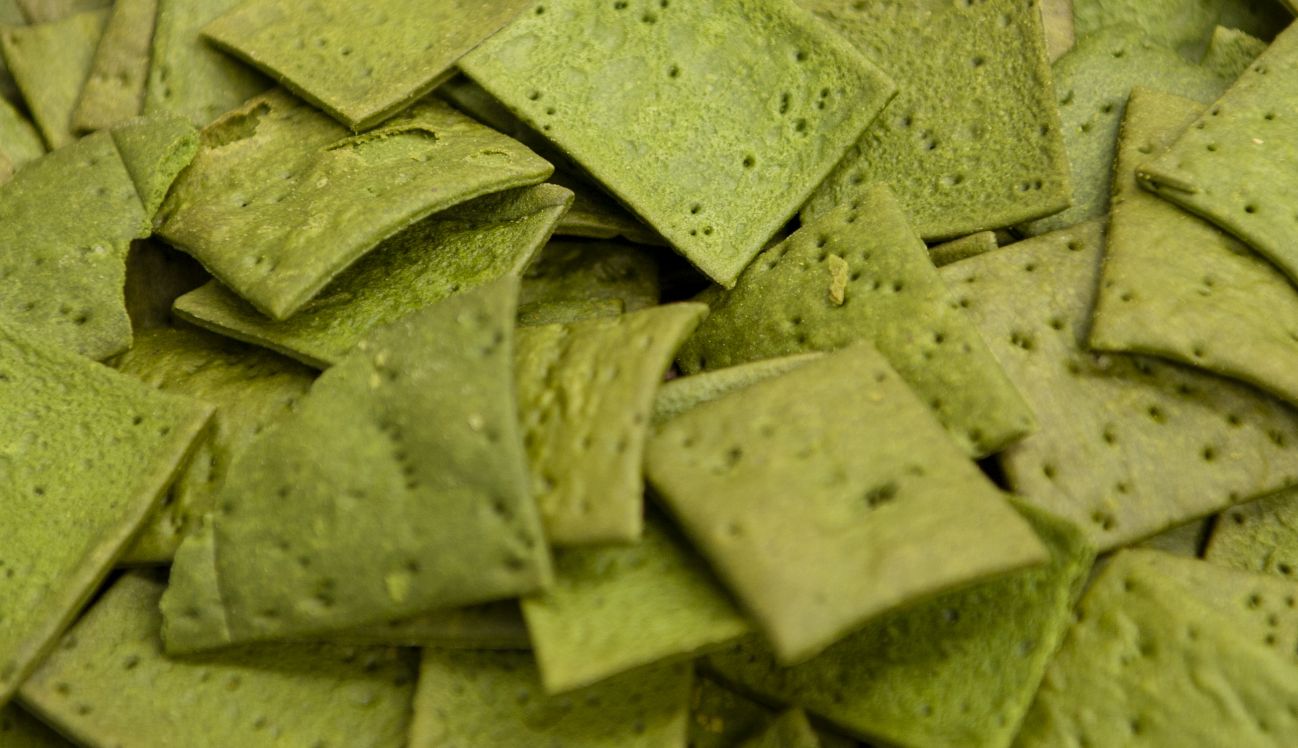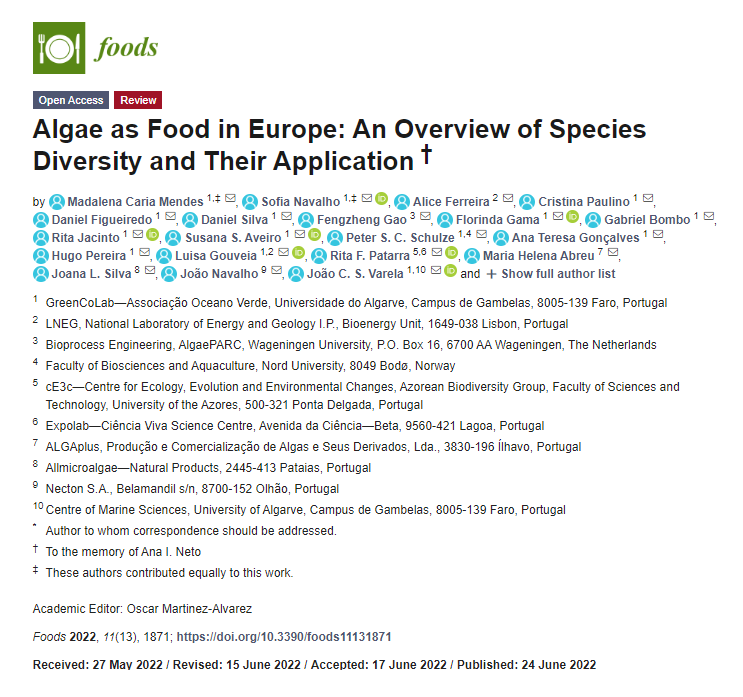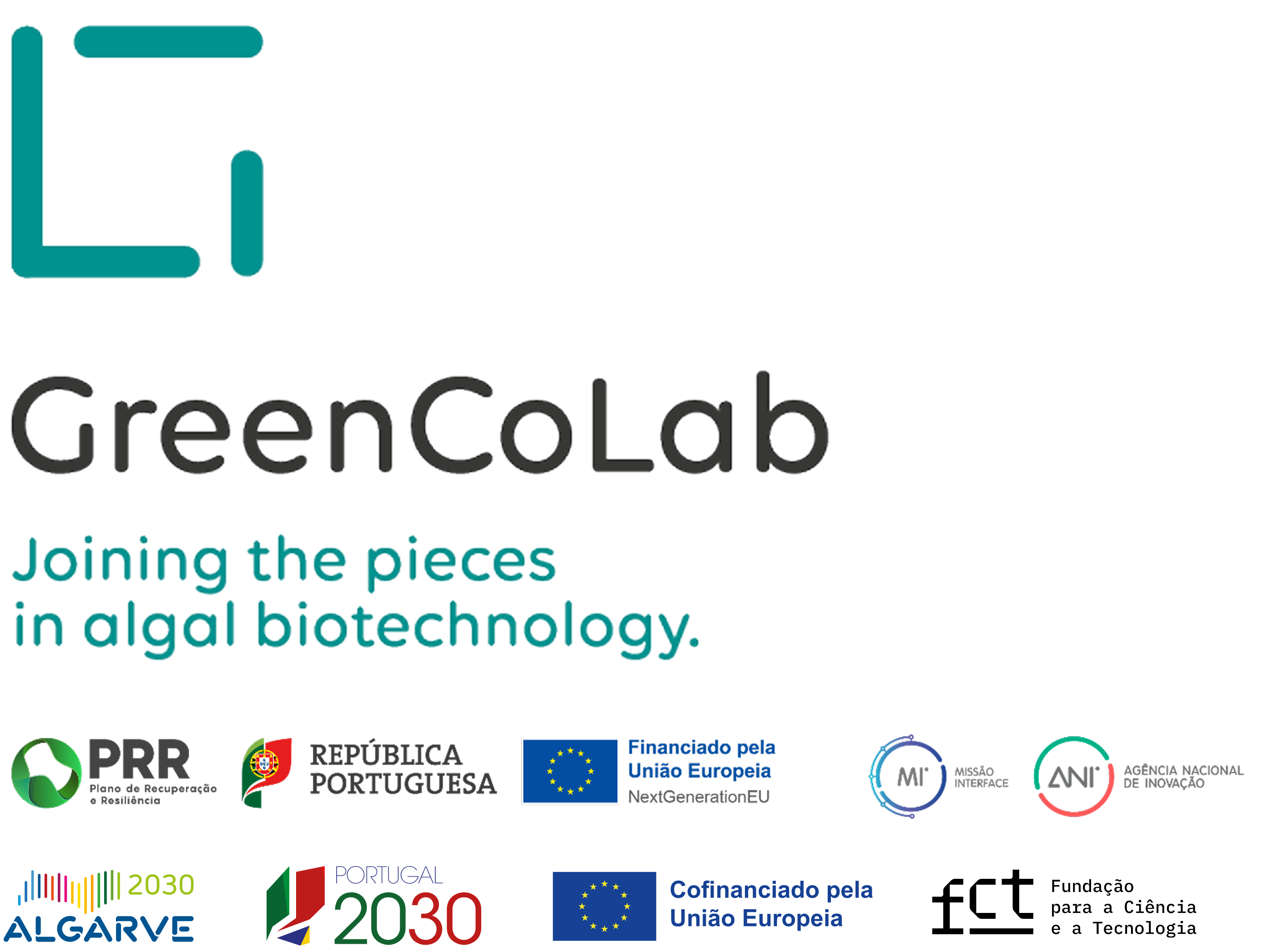

TITLE
Algae as Food in Europe: An Overview of Species Diversity and Their Application
JOURNAL
Foods
AUTHORS
Madalena Caria Mendes, Sofia Navalho, Alice Ferreira, Cristina Paulino, Daniel Figueiredo, Daniel Silva, Fengzheng Gao, Florinda Gama, Gabriel Bombo, Rita Jacinto, Susana S. Aveiro, Peter S. C. Schulze, Ana Teresa Gonçalves, Hugo Pereira, Luisa Gouveia, Rita F. Patarra, Maria Helena Abreu, Joana L. Silva, João Navalho, João C. S. Varela, and Lais Galileu Speranza
ABSTRACT
Algae have been consumed for millennia in several parts of the world as food, food supplements, and additives, due to their unique organoleptic properties and nutritional and health benefits. Algae are sustainable sources of proteins, minerals, and fiber, with well-balanced essential amino acids, pigments, and fatty acids, among other relevant metabolites for human nutrition. This review covers the historical consumption of algae in Europe, developments in the current European market, challenges when introducing new species to the market, bottlenecks in production technology, consumer acceptance, and legislation. The current algae species that are consumed and commercialized in Europe were investigated, according to their status under the European Union (EU) Novel Food legislation, along with the market perspectives in terms of the current research and development initiatives, while evaluating the interest and potential in the European market. The regular consumption of more than 150 algae species was identified, of which only 20% are approved under the EU Novel Food legislation, which demonstrates that the current legislation is not broad enough and requires an urgent update. Finally, the potential of the European algae market growth was indicated by the analysis of the trends in research, technological advances, and market initiatives to promote algae commercialization and consumption.



